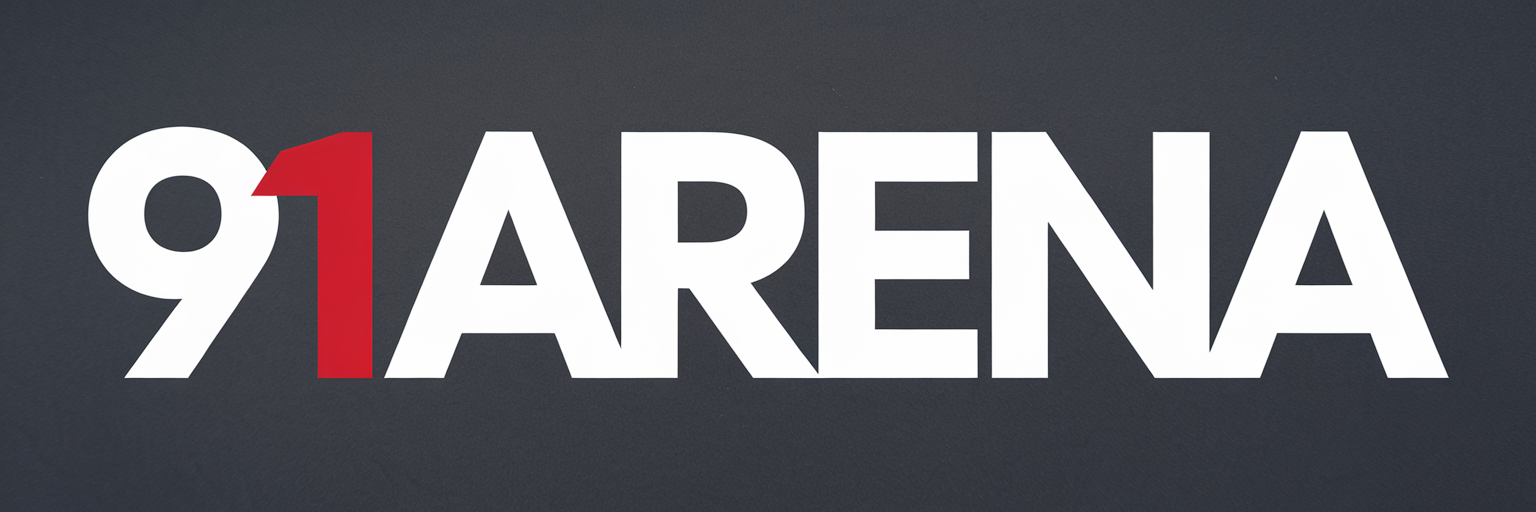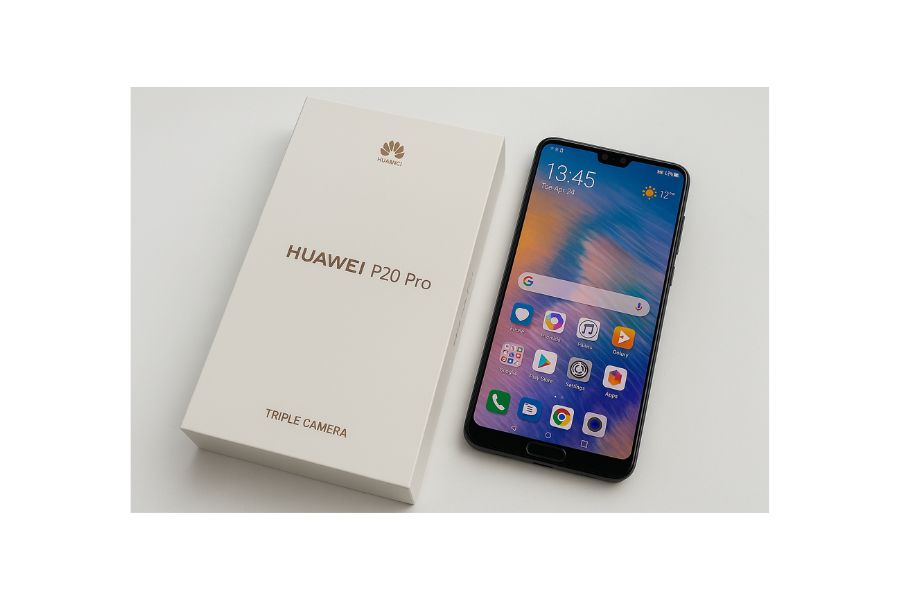Huawei P20 Pro: Redefining Smartphone Photography and Performance
Huawei P20 Pro launched in 2018, it made a bold statement in the world of smartphones. The Chinese tech giant, which was already popular in Asia and parts of Europe, wanted to dominate the global smartphone market by pushing the boundaries of what a phone could offer—particularly in the area of photography.
With the P20 Pro, Huawei introduced groundbreaking features that would redefine mobile photography and push competitors like Samsung and Apple to rethink their offerings. The P20 Pro was the first phone to feature a triple-camera setup, and it carried a sleek design, strong performance capabilities, and premium features that were previously unseen at its price point.
Huawei P20 Pro : A Premium Design That Stands Out
Huawei took design seriously with the P20 Pro. The smartphone sports a glass front and back, surrounded by an aluminum frame that makes the phone feel sturdy yet sophisticated. The build quality is excellent and the phone feels like a luxury item when held in hand. One of the most eye-catching design elements is the “Twilight” color finish, a gradient blend of purple and teal that gives the device a unique look. This design was so well received that many other manufacturers started adopting gradient finishes afterward.
The device features a large 6.1-inch AMOLED display with very thin bezels and a notch at the top. The notch houses the front-facing camera and the earpiece, helping Huawei achieve a higher screen-to-body ratio. Despite the presence of a notch, the phone retains a fingerprint scanner on the front, just below the display, which also acts as a home button. This decision was somewhat unconventional, especially as many competitors were moving fingerprint sensors to the back or into the display. However, Huawei’s implementation allowed for fast and accurate unlocking without compromising the front aesthetics too much.
The phone is IP67 rated for water and dust resistance, which adds to its durability and makes it suitable for use in a variety of environments. Overall, the Huawei P20 Pro’s design is both functional and visually appealing, making it a standout in its class.
Huawei P20 Pro: The Revolutionary Triple Camera System
The triple-camera system is undoubtedly the star of the Huawei P20 Pro. At the time of its release, no other mainstream smartphone offered a similar setup. The camera array consists of a 40 MP RGB sensor, a 20 MP monochrome sensor, and an 8 MP telephoto sensor. This combination allows the P20 Pro to capture incredibly detailed images with excellent dynamic range and color accuracy.
The 40 MP main sensor captures photos at a pixel-binned 10 MP resolution by default, which improves low-light performance. The 20 MP monochrome sensor helps with depth sensing and enhances image sharpness, while the 8 MP telephoto lens provides 3x optical zoom and up to 5x hybrid zoom. This zoom capability was unmatched at the time and allowed users to get closer to their subjects without compromising image quality.
One of the most impressive features of the P20 Pro’s camera system is its performance in low-light conditions. Huawei introduced a “Night Mode” that uses long exposure times and AI-powered stabilization to capture well-lit, detailed shots even in near darkness. This mode changed the way smartphone cameras handled night photography and set a new benchmark for others to follow.
The phone also includes AI scene recognition that can detect more than 20 different scenes and optimize settings accordingly. While this feature can sometimes produce overly saturated images, it generally helps users take better photos without needing to understand manual settings.
For video recording, the Huawei P20 Pro supports 4K video at 30fps, along with slow-motion video at 960fps in 720p. While the video capabilities are decent, they were not as strong as some competitors like the Samsung Galaxy S9 or the iPhone X, particularly in stabilization.
Huawei P20 Pro: Impressive Display Quality
The Huawei P20 Pro features a 6.1-inch AMOLED display with a resolution of 2240 x 1080 pixels, resulting in a pixel density of about 408 PPI. While it may not have the Quad HD resolution found in some flagship devices, the Full HD+ panel still delivers vibrant colors, deep blacks, and excellent contrast.
The AMOLED technology ensures that colors are vivid and the screen is easily visible in bright sunlight. The display supports the DCI-P3 color gamut and HDR10, making it ideal for watching high-quality videos and viewing rich media content.
Huawei also provides color calibration settings within the software, allowing users to adjust the color temperature and saturation to their liking. This level of customization enhances the viewing experience and makes the P20 Pro a great device for multimedia consumption.
Huawei P20 Pro: Hardware and Performance Capabilities
Under the hood, the Huawei P20 Pro is powered by the Kirin 970 processor, which was the company’s flagship chipset at the time. The chipset is paired with 6 GB of RAM and 128 GB of internal storage. The absence of a microSD card slot might be a limitation for users who need additional storage, but 128 GB is sufficient for most people.
The Kirin 970 includes a dedicated Neural Processing Unit (NPU) for AI tasks, which was an industry-first at its launch. This NPU allows the phone to perform intelligent tasks such as scene recognition, resource allocation, and battery management more efficiently.
In terms of performance, the P20 Pro handles everyday tasks smoothly. Apps open quickly, multitasking is fluid, and gaming performance is solid. While it may not match the raw power of Qualcomm’s Snapdragon 845 found in other flagships, the Kirin 970 holds its own and delivers a responsive user experience.
Huawei’s EMUI skin over Android adds various features and optimizations but may not be to everyone’s taste. Some users may find it too heavy or cluttered compared to stock Android, although it offers a lot of customization options and tools like dual apps, app lock, and smart gestures.
Huawei P20 Pro: Battery Life and Charging
Battery life is another area where the Huawei P20 Pro shines. It comes equipped with a 4,000 mAh battery, which is large enough to provide more than a full day of usage on a single charge. Even with heavy use involving gaming, photography, video playback, and web browsing, the phone easily lasts throughout the day.
Huawei includes its SuperCharge technology with the P20 Pro, allowing the phone to charge from 0 to 58 percent in about 30 minutes using the bundled 22.5W charger. This fast charging capability is incredibly useful for users who are always on the move and need quick top-ups.
However, one drawback is the lack of wireless charging, which was available on many premium smartphones at the time. Given the glass back design, this omission is somewhat disappointing, especially for users who are used to the convenience of wireless charging pads.
Huawei P20 Pro: Software and User Interface
The Huawei P20 Pro launched with Android 8.1 Oreo and Huawei’s EMUI 8.1 interface. Over time, the device received several software updates, including an upgrade to Android 10 with EMUI 10. Huawei’s software has always been feature-rich, but it has also been criticized for being overly aggressive with background app management and notifications.
EMUI brings a number of enhancements such as a customizable navigation bar, gesture controls, system-wide dark mode, and performance optimization features. There’s also Huawei’s own app ecosystem and integration with Huawei Cloud, themes, and health tracking apps.
However, EMUI’s design language, heavy skinning, and pre-installed apps (bloatware) might not appeal to users who prefer a cleaner Android experience. Nonetheless, the software is stable, well-optimized for the hardware, and regularly updated with security patches.
Huawei P20 Pro: Audio and Multimedia Features
In terms of audio, the Huawei P20 Pro delivers good sound quality through its stereo speakers. One speaker is located at the bottom, while the other uses the earpiece as a secondary channel. This setup creates a more immersive audio experience, especially for watching videos or playing games.
The device does not feature a 3.5mm headphone jack, which was becoming a trend among flagship phones at the time. Instead, Huawei includes a USB-C to 3.5mm adapter in the box. Audiophiles might be disappointed, but the USB-C port does support high-resolution audio.
The P20 Pro also features Dolby Atmos support, enhancing the overall sound quality when using headphones. The inclusion of aptX HD and LDAC ensures that Bluetooth audio quality is also top-notch, making it suitable for wireless headphone users.
Huawei P20 Pro: Security and Biometrics
Security is well addressed in the Huawei P20 Pro. It offers multiple biometric options, including a front-mounted fingerprint scanner and facial recognition. The fingerprint scanner is fast and accurate, allowing users to unlock the device almost instantly.
The facial recognition feature uses the front camera to identify the user’s face. While it is quick and works well in good lighting, it is not as secure as 3D face recognition systems found in some other flagship devices. Therefore, users may prefer to use the fingerprint sensor for sensitive transactions or secure apps.
Huawei P20 Pro: Connectivity and Network Support
The Huawei P20 Pro supports a wide range of LTE bands, making it suitable for global use. It also includes dual SIM support, which is a significant advantage for travelers and business users. Other connectivity options include dual-band Wi-Fi, Bluetooth 4.2, NFC, and USB-C.
One missing feature is support for Wi-Fi 6, which was not available at the time of the phone’s release. However, for most users, the existing connectivity features are more than adequate for daily usage.
Huawei P20 Pro: Value for Money and Market Impact
At launch, the Huawei P20 Pro was priced competitively compared to rivals from Samsung and Apple. Despite offering superior camera technology and a premium design, it undercut flagship devices by hundreds of dollars in some markets. This aggressive pricing helped Huawei gain market share, especially in Europe and Asia.
The P20 Pro not only received critical acclaim but also won several awards for its camera and design. It played a key role in elevating Huawei’s reputation as a premium smartphone maker and forced other manufacturers to pay attention to mobile photography.
Huawei P20 Pro: Legacy and Influence on Future Phones
The Huawei P20 Pro set new standards for smartphone photography and design. Its triple-camera setup inspired other manufacturers to adopt multi-camera arrays, and its Night Mode changed the way low-light photography was approached in smartphones.
It also marked the beginning of Huawei’s dominance in the smartphone market before geopolitical issues limited its global reach. Despite the challenges the company later faced, the P20 Pro remains a landmark device that pushed the boundaries of mobile technology.
Huawei P20 Pro: Final Verdict
The Huawei P20 Pro is a smartphone that left a lasting legacy in the industry. Its stunning design, revolutionary camera system, strong performance, and excellent battery life make it one of the most well-rounded flagship smartphones of its time. While it has some limitations, such as the absence of wireless charging and the lack of a headphone jack, these are minor when weighed against its numerous strengths.
Even years after its release, the Huawei P20 Pro continues to be remembered as a trailblazer. For users who value photography and premium design, it stands as a benchmark for what smartphones can achieve when innovation meets execution.

